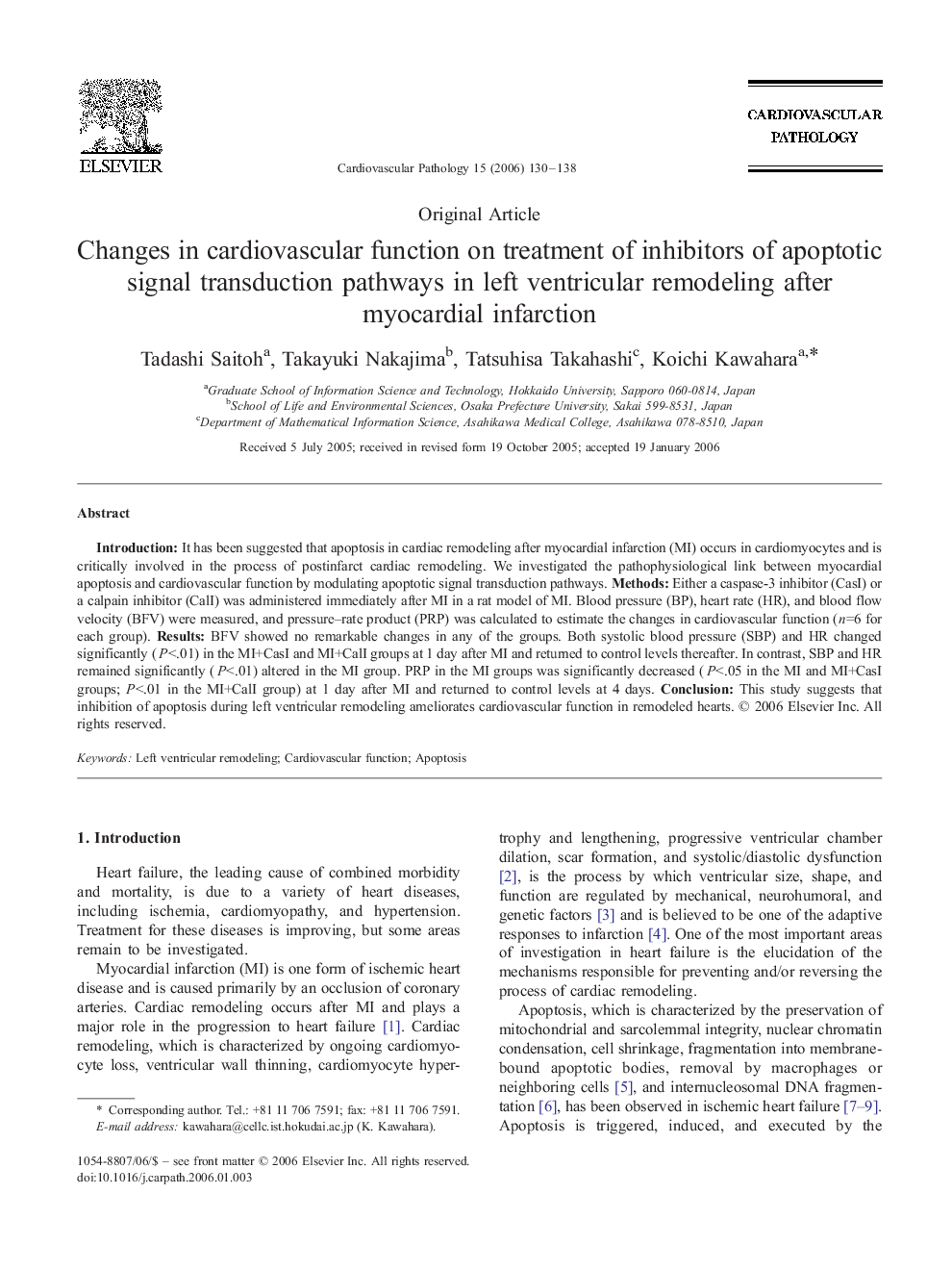| Article ID | Journal | Published Year | Pages | File Type |
|---|---|---|---|---|
| 2899241 | Cardiovascular Pathology | 2006 | 9 Pages |
IntroductionIt has been suggested that apoptosis in cardiac remodeling after myocardial infarction (MI) occurs in cardiomyocytes and is critically involved in the process of postinfarct cardiac remodeling. We investigated the pathophysiological link between myocardial apoptosis and cardiovascular function by modulating apoptotic signal transduction pathways.MethodsEither a caspase-3 inhibitor (CasI) or a calpain inhibitor (CalI) was administered immediately after MI in a rat model of MI. Blood pressure (BP), heart rate (HR), and blood flow velocity (BFV) were measured, and pressure–rate product (PRP) was calculated to estimate the changes in cardiovascular function (n=6 for each group).ResultsBFV showed no remarkable changes in any of the groups. Both systolic blood pressure (SBP) and HR changed significantly (P<.01) in the MI+CasI and MI+CalI groups at 1 day after MI and returned to control levels thereafter. In contrast, SBP and HR remained significantly (P<.01) altered in the MI group. PRP in the MI groups was significantly decreased (P<.05 in the MI and MI+CasI groups; P<.01 in the MI+CalI group) at 1 day after MI and returned to control levels at 4 days.ConclusionThis study suggests that inhibition of apoptosis during left ventricular remodeling ameliorates cardiovascular function in remodeled hearts.
